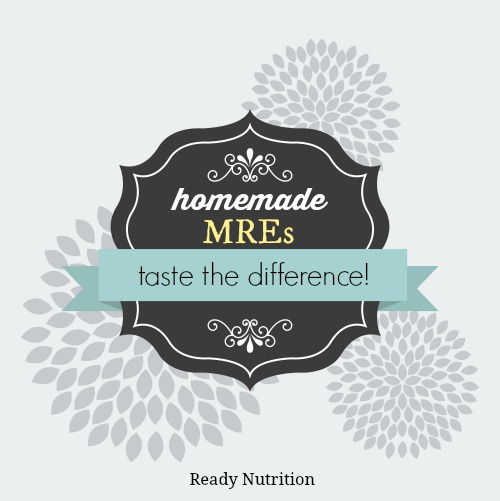
If you have certain food allergies or other dietary requirements, it would make more sense to make your own rather than gamble on an allergy flare up. With the homemade versions, you also have the benefit of having a re-usable bag, which can be used for carrying water, or being used to boil other foods.
What You’ll Find With Pre-Assembled MREs
As this site notes, MREs manufactured since 2005 are of equal quality and caloric value as military MREs. They now average about 1,222 calories per meal. The typical MRE entrée has crackers (pilot bread), spread to put on the crackers, a side dish, dessert or snack, powdered beverage and an accessory pack with matches, gum, instant coffee, creamer, sugar, salt, moist towelette and toilet paper. All of these contents are packed into a sealed heavy plastic bag.
You can easily create a similar version by vacuum sealing your items or sealing them in a Mylar bag. With a little searching you can find most shelf stable foods in single serve packets. This also cuts down on the food enemies. To buy single serve packets in bulk, I went to Amazon.com where they have everything from packets of water and meats to packets of dehydrated vegetables.
Keep Nutrition in Mind
As with all emergency food supplies, you want to keep some basics in mind with the foods you decide to store. Find foods that are just add water meals or no cook meals to help you conserve your emergency supplies.
- Shelf life (at least 6 months-1 year)
- Calorie content (1200-2000 calories)
- Nutritional needs
- Protein content
- Heating and preparation
- Cost
When you assemble your MREs, remember to make your meals calorie dense with lots of protein and healthy carbohydrates (preferably whole grains). Here is an easy equation to follow when packing your foods up:
Protein + Carbohydrate + Fruit/Vegetable + Sweet snack + 4 ounce water pouch = 1,200 calories
Remember to purchase foods that are shelf stable and have a longer shelf life. Further, save those plastic utensil packages and condiments from your take out orders. In no time you will have an ample supply of them to use toward your homemade MREs. Purchasing these foods in bulk can save you some money in the long run.
As mentioned previously, homemade MREs will not have a comparable shelf life to their commercial counterparts. But if you are resupplying your food pantry, you could easily rotate these in as meals. Some MRE food suggestions are below.
Breakfast
Lunch
- Ramen noodles
- Power bar
- Single servings of peanut or almond butter
- Cheese and cracker packs
- Unsalted nut packs
Dinner
- Singles of packed meat (tuna, salmon, chicken, Spam, etc.)
- Beef jerky
- Pre-cooked rice or quinoa packages
- Instant soups or make your own
Snack
- Single servings of cookies
- Fruit roll ups
- Dried fruit snacks
- Pudding packs
- Dried fruit packs
- Trail mix packs
- Applesauce
Beverages
- 4-ounce water pouches
- Instant coffee
- Electrolyte drink packets
- Hot chocolate
- Instant fruit drink mixes
- Instant tea
Various condiments
Pack It and Stack It
Add meals to a vacuum sealed bag or Mylar bag. Flatten your assembled MRE’s as much as possible (without damaging the packaging) and seal them thoroughly. Ensure that you label the contents along with the packing date to stay organized. It would also be proactive to list the best by date.
Making your own emergency meals is a convenient way to store a balanced amount of shelf stable foods for a rainy day. Keep the above suggestions in mind when you are planning your homemade MREs and you will have your emergency meals ready in no time.

This article was originally published at Ready Nutrition™ on October 2nd, 2012







Thank you for this info!
Do you have estimates on the shelf life of simply placing ramen, or granola bars into mylar bags with the proper oxygen absorber?
Most foods have a best by date. If not, canned foods, except acidic ones (pineapple, tomatoes) can last 5 years.